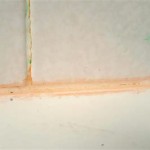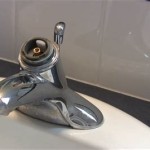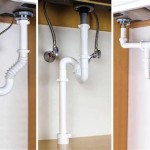How Do I Get Rid Of Mold On My Bathroom Walls?
Mold growth in a bathroom is a common problem, often stemming from excess moisture and poor ventilation. This unsightly and potentially harmful fungus can appear on walls, ceilings, grout, and even shower curtains. While mold can be an eyesore, it also poses health risks, especially for individuals with allergies or respiratory problems. The following guide outlines effective strategies for tackling mold in your bathroom, ensuring a safe and healthy environment.
Understanding the Causes of Mold Growth
To effectively combat mold, it is crucial to understand the conditions that promote its growth. Bathrooms are particularly susceptible due to their inherent moisture levels. Condensation from hot showers, steam from baths, and a lack of proper ventilation create an ideal breeding ground for mold spores. Other contributing factors include leaks, dripping faucets, and poor drainage. Identifying these sources is essential for preventing future outbreaks.
Removing Mold from Bathroom Walls
Mold removal involves a multi-step process that tackles both the visible growth and the underlying causes. The first step is to assess the extent of the infestation. If the affected area is small and the mold growth is superficial, a DIY approach may suffice. However, for widespread or persistent mold, professional assistance is recommended.
Step 1: Prepare the Area
Before starting the cleaning process, it is important to prepare the area and protect yourself. This includes:
- Ventilation: Open windows and doors to provide adequate ventilation. This helps to minimize mold spores in the air and prevents you from inhaling them.
- Protective Gear: Wear gloves, a mask, and goggles to protect yourself from contact with mold and its spores.
- Cleaning Supplies: Gather the necessary cleaning supplies, such as a spray bottle, cleaning cloths, a scrub brush, and a bucket.
Step 2: Clean the Mold
Once the area is prepared, you can begin cleaning the mold. This involves several steps:
- Choose a Cleaning Solution: Several cleaning solutions are effective against mold, including a mixture of water and bleach, white vinegar, or a commercially available mold remover. Always follow the manufacturer's instructions.
- Apply the Solution: Apply the cleaning solution to the affected area using a spray bottle or cloth. Be sure to saturate the mold thoroughly.
- Scrub the Surface: Use a scrub brush to loosen and remove the mold. If the mold is stubborn, you may need to scrub with a little more force. However, be careful not to damage the surface.
- Rinse and Dry: After scrubbing, rinse the surface thoroughly with clean water. Then, dry the area completely with a clean cloth or towel. Proper drying is crucial to prevent mold from returning.
Step 3: Address the Underlying Causes
After cleaning the mold, it is essential to address the underlying causes to prevent it from returning. This involves:
- Improve Ventilation: Ensure adequate ventilation in your bathroom. This can be achieved by using an exhaust fan during and after showering or bathing. Consider upgrading your current exhaust fan to a more powerful model if necessary.
- Repair Leaks: Fix any leaks promptly, including dripping faucets, leaking pipes, and clogged drains. These contribute significantly to excess moisture and mold growth.
- Improve Drainage: Ensure that your shower or bathtub has proper drainage. This prevents water from pooling and creating a breeding ground for mold.
- Reduce Humidity: Use a dehumidifier in your bathroom, especially during humid seasons, to reduce the moisture level in the air.
Step 4: Prevention
Preventing mold growth in the first place is the most effective way to ensure a healthy bathroom environment. Here are some preventative measures:
- Regular Cleaning: Clean your bathroom regularly, including wiping down surfaces after every shower. This helps to prevent mold from accumulating and becoming a persistent problem.
- Ventilation: Always use the exhaust fan during and after showers or baths. This removes excess moisture and prevents it from accumulating on surfaces.
- Drying Surfaces: After showering or bathing, dry all surfaces, including walls, floors, and shower curtains. This removes moisture and prevents mold from growing.
- Sealant: Apply a sealant to grout and other porous surfaces in your bathroom. This prevents moisture from penetrating the material and supports mold growth.
By understanding the causes of mold growth, taking steps to remove it effectively, and implementing preventative measures, you can create and maintain a safe and healthy bathroom environment.

How To Get Rid Of Mold In The Shower On Bathroom Walls Clorox

How To Get Rid Of Mold In Bathroom 2024 Tips From Puroclean

How To Get Rid Of Mold On Bathroom Walls Family Handyman

How To Get Rid Of Mould And Mildew In Your Bathroom Rac Wa

How To Remove Mold From Walls True Value

Bathroom Ceiling Mold Removal When To Clean Call Branch Environmental

How To Get Rid Of Black Mold In Bathrooms

Bathroom Mold How To Identify And Get Rid Of In Environix

The Ultimate Guide On How To Clean And Get Rid Of Mold Pro Housekeepers

Bathroom Mold How To Identify And Get Rid Of In Environix
Related Posts







